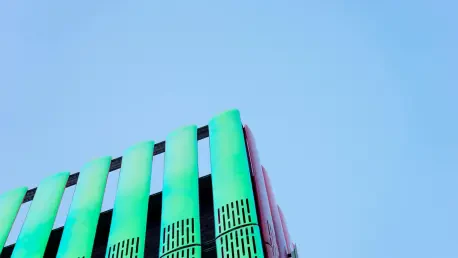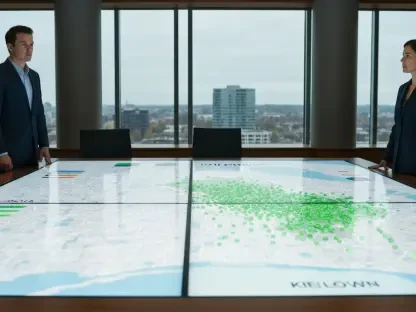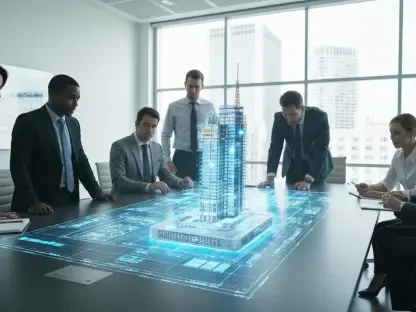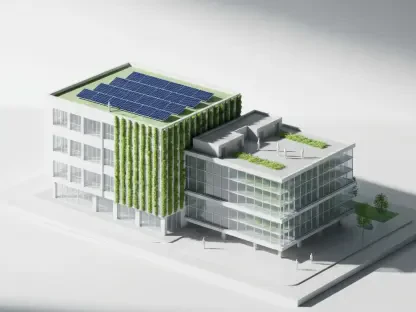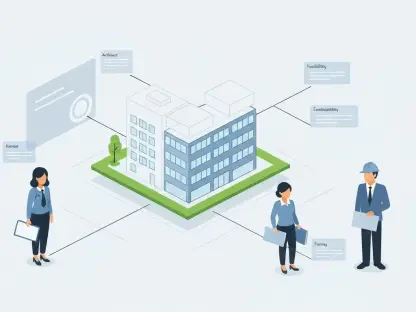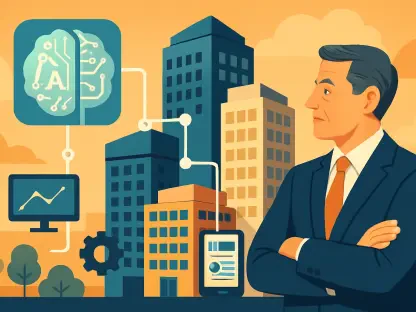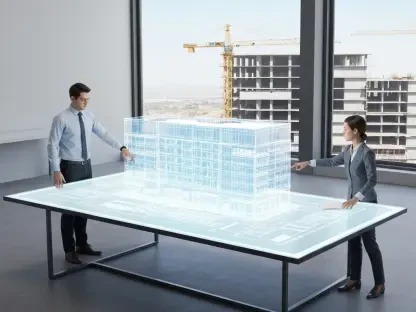Luca Calarailli is a seasoned expert in construction, whose vast experience in design and architecture, coupled with a passion for technological advancements, makes him an insightful voice in the evolving landscape of green building technologies. This interview delves into the recent findings from a joint study by Schneider Electric and the Singapore Green Building Council, exploring how these innovations are shaping sustainable practices and influencing business strategies in Singapore.
Can you tell us more about the joint study conducted by Schneider Electric and the Singapore Green Building Council?
The joint study by Schneider Electric and the Singapore Green Building Council reveals some compelling insights into the effectiveness of green building technologies. The study highlights the significant impact these technologies have on both cost savings and emissions reductions, making it a crucial reference for stakeholders interested in environmental sustainability.
What are some of the key findings of the study regarding green building technologies in Singapore?
One of the standout findings of the study is the impressive energy savings, with some respondents recording up to 20% over the past year. This data underscores the potential for green technologies to drive significant efficiency gains. The study also indicates a broadening of factors that drive green building ambitions, such as the increasing role of employee expectations and regulatory pressures.
How do green building technologies contribute to cost savings and emissions reductions?
Green building technologies enhance energy efficiency, which directly translates into cost savings by reducing the utility bills for businesses. Additionally, by minimizing energy consumption, these technologies significantly cut down on emissions, contributing to broader environmental targets.
Could you elaborate on the energy savings respondents have recorded over the past 12 months?
Respondents have experienced up to 20% in energy savings, a testament to the effectiveness of modern green building solutions. This level of savings not only affirms the financial benefits but also emphasizes the role these technologies play in pushing forward sustainability goals.
How does Singapore’s embrace of digital green building solutions impact its progress towards national net-zero targets?
Singapore’s adoption of digital green building solutions is pivotal to achieving its net-zero targets. These solutions are not only reducing emissions but are also scalable, allowing for wide implementation across the city-state’s built environment, thereby accelerating progress towards sustainability.
In what ways are digital green building solutions scalable for broader implementation?
Digital solutions are inherently flexible and can be customized for different types of buildings and scales. Their ability to integrate with existing structures and systems makes them highly adaptable, thus facilitating widespread adoption and maximizing their environmental and financial benefits.
How does Schneider Electric plan to contribute to Singapore’s green journey as a responsible private sector member?
Schneider Electric plans to lead by example, integrating cutting-edge green building technologies in its projects and collaborations. It aims to share insights and drive innovation while actively participating in initiatives that foster a sustainable urban environment.
What are some of the wider range of factors driving green building ambitions among business leaders in Singapore?
Aside from sustainability and energy efficiency, business leaders are motivated by a mix of economic benefits, regulatory requirements, and changing corporate values. There’s an increasing focus on achieving an eco-friendly workplace that meets both market demands and employee expectations.
How have employee expectations influenced the adoption of green building technologies?
Employee expectations have become a notable driver as more individuals seek environmentally responsible employers. This shift has prompted companies to adopt green building technologies to align with those expectations and attract top talent.
Why do you think there has been an increase in the percentage of business leaders citing employee expectations as a driver for adopting green buildings?
The rise likely reflects a growing awareness within the workforce about sustainability issues. Employees today are more likely to choose employers whose values align with their own, particularly concerning environmental responsibility, prompting companies to respond by adopting green practices.
How have regulatory expectations impacted the adoption of green building technologies?
Regulatory expectations have played a critical role in accelerating green tech adoption. Policies like Singapore’s Mandatory Energy Improvement regime create a framework that compels businesses to prioritize energy efficiency and sustainability upgrades.
Can you explain Singapore’s Mandatory Energy Improvement (MEI) regime and its effect on green building adoption?
The MEI regime mandates specific energy improvements in buildings, which has driven the adoption of green technologies. By setting clear guidelines and expectations, it effectively motivates businesses to innovate and comply with new energy standards.
How has the MEI regime influenced business leaders’ decisions to adopt green technologies?
The regime has clarified the business case for green building technologies by linking compliance with long-term cost efficiencies and reduced environmental impact. This clear correlation encourages more leaders to invest in and trust these innovations.
What role do incentives play in motivating the retrofitting of older buildings?
Incentives are crucial. They make retrofitting financially attractive, encouraging building owners to upgrade existing structures rather than start from scratch, thus conserving resources and adapting infrastructure to meet modern sustainability standards.
What progressive upgrades to building standards can encourage the adoption of green technologies?
Upgrading standards to include more stringent energy efficiency benchmarks and incentives for incorporating renewable energy sources could propel green technology adoption. These standards could also mandate innovative materials and design approaches that enhance sustainability.
What challenges does Singapore face in meeting its 2030 green building targets?
Singapore could face hurdles such as technological integration into older buildings, initial financial costs, and sufficient public awareness. Addressing these challenges requires coordinated effort from both the public and private sectors, alongside ongoing regulatory support.
How can the momentum in green building regulation be maintained or increased?
Sustaining momentum will require continuous updates to regulations that reflect technological advancements and the evolving climate landscape. Incentives for innovation and partnerships among government, industry, and academia could further drive sustainable practices.
Do you have any advice for our readers?
Stay informed and proactive about sustainable trends and technologies. Embrace the opportunity to innovate, as the future belongs to those who are prepared to think creatively about environmental challenges and integrate sustainable solutions into everyday practices.
